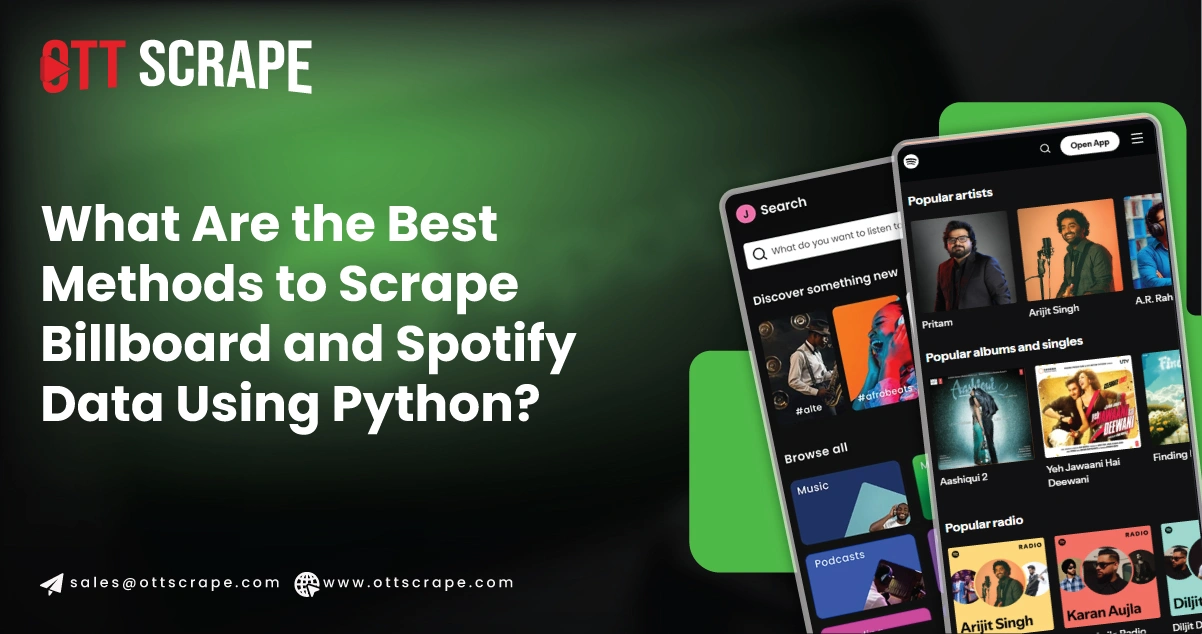
Introduction
In today's music-driven digital world, having access to real-time information about trending songs, artists, and playlists offers valuable insights for music lovers, marketers, researchers, and developers alike. Platforms like Billboard and Spotify provide extensive data on music popularity, chart rankings, and user listening behavior. However, obtaining this data in a structured, usable format often requires specialized techniques such as scraping or using APIs. This blog will discuss how to scrape Billboard and Spotify data with Python, highlighting practical tools and effective methods to gather, process, and analyze music-related data. Whether you want to scrape Billboard charts Python to track the latest hits or scrape Spotify data with Python to explore track features and listener trends, this guide will equip you with the knowledge to access and work with music data efficiently. Combining web scraping and API usage can unlock powerful insights and build innovative music data projects.
Why Scrape Billboard and Spotify Data?
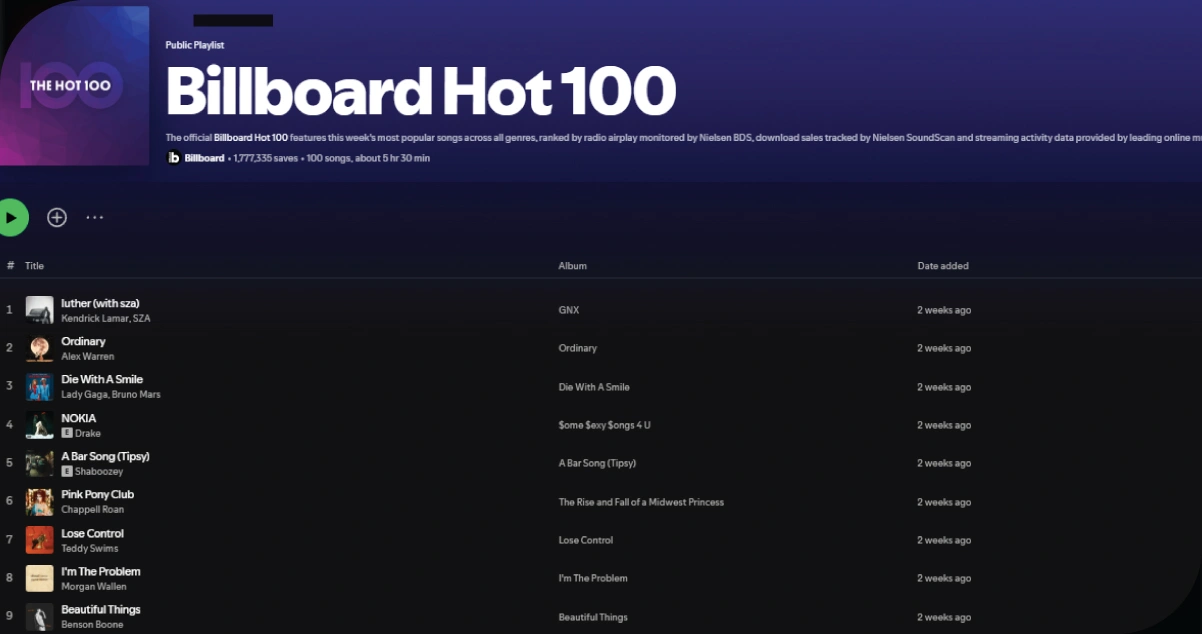
Scraping Billboard and Spotify data is essential to uncovering music trends, tracking chart performance, and analyzing listener behavior. By using techniques to scrape song data, industry professionals can monitor song popularity, discover emerging artists, and optimize marketing strategies. This data-driven approach helps labels, marketers, and streaming platforms make informed decisions and stay competitive in the fast-evolving music landscape.
Billboard
Billboard charts have been the industry standard for measuring song popularity for decades. The Billboard Hot 100, Billboard 200, and other genre-specific charts provide weekly snapshots of what's trending in the music industry. Scraping Billboard data allows you to:
- Analyze trends over time.
- Track artist and song performance.
- Conduct sentiment or popularity analysis.
- Build custom music recommendation systems or dashboards.
Spotify
Spotify is the world's largest music streaming platform, hosting millions of tracks and an active user base. Spotify data includes:
- Track metadata (title, artist, album, release date).
- Popularity scores based on streaming counts.
- Playlist data revealing user preferences.
- Audio features like tempo, key, and danceability.
Scraping or accessing Spotify data enables developers and researchers to understand listener behavior and musical attributes.
Methods to Scrape Billboard and Spotify Data

There are two primary ways to extract music data:
1. Web scraping — programmatically extracting data from publicly available web pages.
2. API access — using official or unofficial APIs provided by the platforms.
Web Scraping: Web scraping involves using Python libraries like BeautifulSoup, Requests, or Selenium to navigate web pages and extract data. Billboard's chart pages are generally HTML-based and can be scraped directly since they don't provide a public API. On the other hand, Spotify's data is accessible via their official Web API, which is much more efficient and reliable than scraping web pages.
API Access: Spotify offers an official Web API to fetch data about tracks, artists, albums, playlists, and more. It requires authentication via OAuth tokens but provides structured JSON data that's easy to consume.
Tools and Libraries You Need
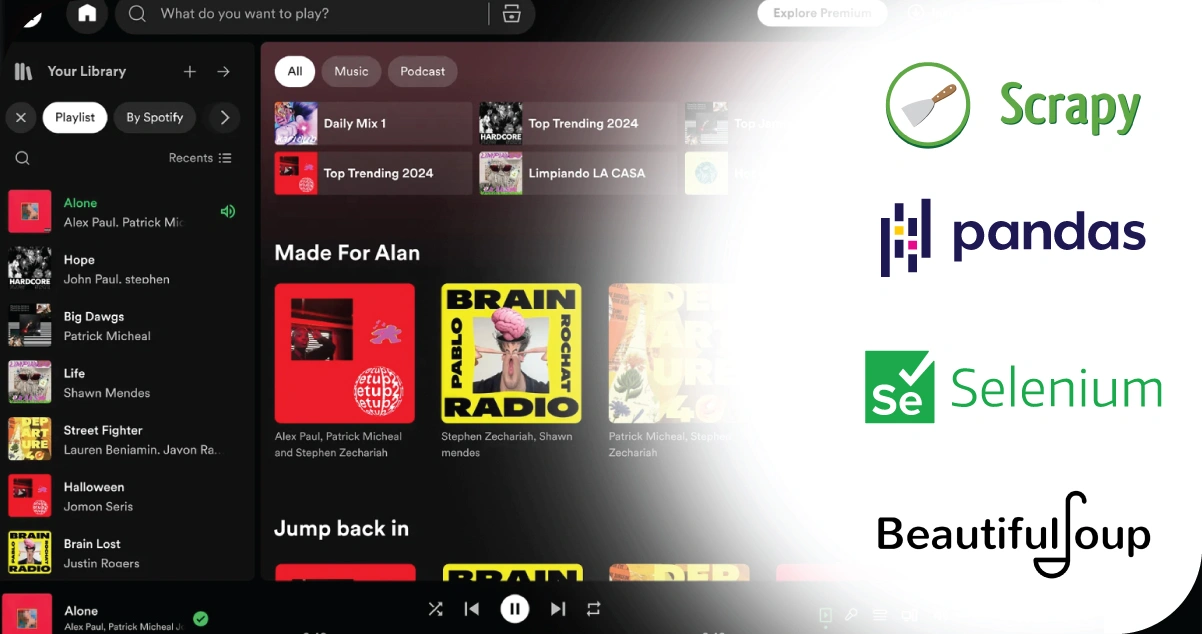
To get started, ensure you have the following Python packages installed:
- requests — for making HTTP requests.
- beautifulsoup4 — for parsing HTML content.
- spotipy — a lightweight Python client for the Spotify Web API.
- pandas — for data manipulation and analysis.
- selenium (optional) — for dynamic page scraping if needed.
You can install them via pip:
pip install requests beautifulsoup4 spotipy pandas selenium
Step 1: Scraping Billboard Data with Python
Billboard's charts are available online at billboard.com/charts. For example, the Hot 100 chart can be found at https://www.billboard.com/charts/hot-100.
How Billboard Web Pages Are Structured?
The page contains HTML elements with song titles, artists, rankings, and other metadata embedded in identifiable tags and classes.
Sample Code to Scrape Billboard Hot 100
import requests
from bs4 import BeautifulSoup
import pandas as pd
# URL of Billboard Hot 100 chart
url = "https://www.billboard.com/charts/hot-100"
# Send GET request to fetch page content
response = requests.get(url)
if response.status_code == 200:
soup = BeautifulSoup(response.text, 'html.parser')
# Extract song titles
songs = [element.get_text(strip=True) for element in soup.select('li.o-chart-results-list__item h3.c-title')]
# Extract artist names
artists = [element.get_text(strip=True) for element in soup.select('li.o-chart-results-list__item span.c-label')]
# Extract ranks (if needed)
ranks = list(range(1, len(songs) + 1))
# Create DataFrame
billboard_df = pd.DataFrame({
'Rank': ranks,
'Song': songs,
'Artist': artists[:len(songs)] # Adjust length to match songs
})
print(billboard_df.head())
else:
print("Failed to retrieve Billboard data")
Important Notes
- Billboard frequently updates its website design, so CSS selectors might need adjustments over time.
- Some data like song duration or label might not be directly available on the page and would require more advanced scraping or other sources.
- Be respectful of site terms of service and avoid aggressive scraping to prevent IP blocking.
Step 2: Accessing Spotify Data Using Spotify Web API with Python
Spotify's API provides comprehensive access to music data but requires registering a developer account and creating an app to get client ID and client secret credentials.
How to Set Up Spotify API Access?
1. Visit Spotify Developer Dashboard.
2. Log in and create a new application.
3. Note your Client ID and Client Secret.
4. Use the Spotipy library to authenticate and make API requests.
Sample Code to Get Track Information from Spotify
import spotipy
from spotipy.oauth2 import SpotifyClientCredentials
import pandas as pd
# Spotify credentials
client_id = 'YOUR_CLIENT_ID'
client_secret = 'YOUR_CLIENT_SECRET'
# Authentication
client_credentials_manager = SpotifyClientCredentials(client_id=client_id, client_secret=client_secret)
sp = spotipy.Spotify(client_credentials_manager=client_credentials_manager)
# Example: Search for a song and get its details
query = "Blinding Lights"
result = sp.search(q=query, limit=1, type='track')
track = result['tracks']['items'][0]
track_info = {
'name': track['name'],
'artist': track['artists'][0]['name'],
'album': track['album']['name'],
'release_date': track['album']['release_date'],
'popularity': track['popularity'],
'duration_ms': track['duration_ms'],
'explicit': track['explicit']
}
print(track_info)
Getting Audio Features
Spotify also provides audio features such as tempo, key, danceability, and energy, which can be useful for musical analysis:
track_id = track['id']
features = sp.audio_features(track_id)[0]
print({
'danceability': features['danceability'],
'energy': features['energy'],
'key': features['key'],
'loudness': features['loudness'],
'tempo': features['tempo'],
'valence': features['valence']
})
Step 3: Combining Billboard and Spotify Data
You can enrich Billboard chart data by querying Spotify for detailed metadata and audio features. For example:
- Scrape Billboard Hot 100 song titles and artists.
- Use Spotify API to get detailed track info for each Billboard song.
- Merge both datasets to create a powerful dataset for analysis.
Example workflow:
billboard_songs = ['Blinding Lights', 'Watermelon Sugar', 'Levitating']
billboard_artists = ['The Weeknd', 'Harry Styles', 'Dua Lipa']
data = []
for song, artist in zip(billboard_songs, billboard_artists):
query = f"track:{song} artist:{artist}"
result = sp.search(q=query, limit=1, type='track')
if result['tracks']['items']:
track = result['tracks']['items'][0]
features = sp.audio_features(track['id'])[0]
data.append({
'song': song,
'artist': artist,
'spotify_popularity': track['popularity'],
'danceability': features['danceability'],
'energy': features['energy'],
'tempo': features['tempo'],
'valence': features['valence']
})
df = pd.DataFrame(data)
print(df)
Tips and Best Practices
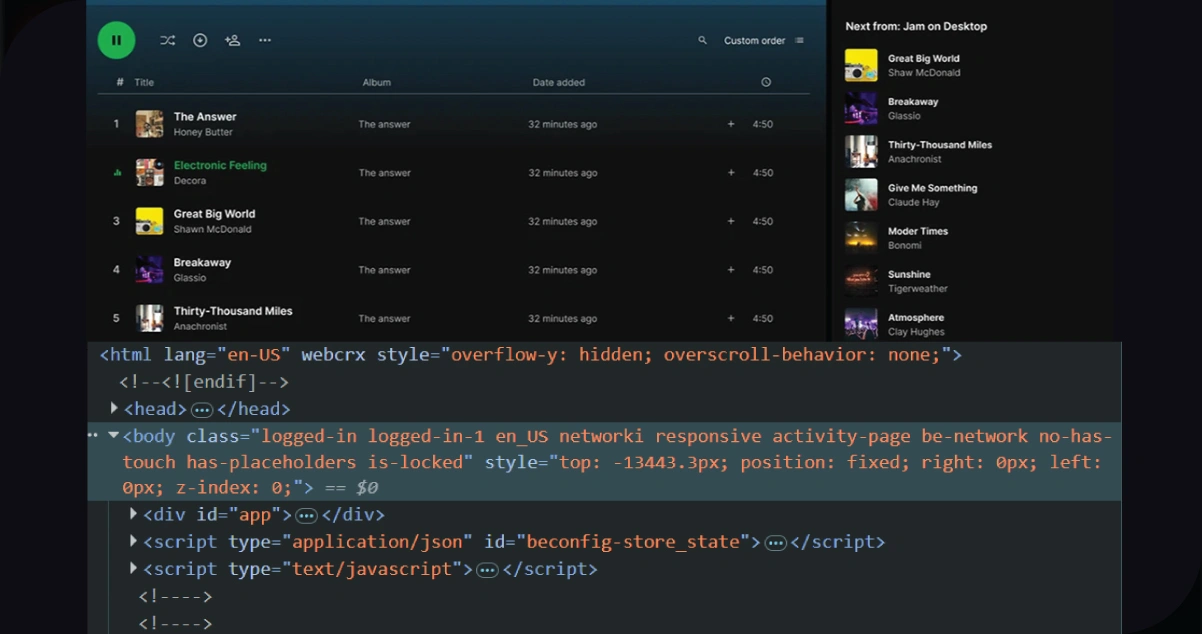
Respect API Limits and Terms
- Spotify API has rate limits; plan your requests accordingly.
- Billboard does not provide an official API; ensure scraping respects robots.txt and terms of use.
Handle Missing Data Gracefully
- Some songs might not be found on Spotify.
- Always add error handling when dealing with external data sources.
Automate and Schedule Updates
- Use Python scripts with cron jobs or cloud functions to regularly update datasets.
- Store data in CSV, databases, or dashboards for visualization.
Use Cases for Scraped Music Data
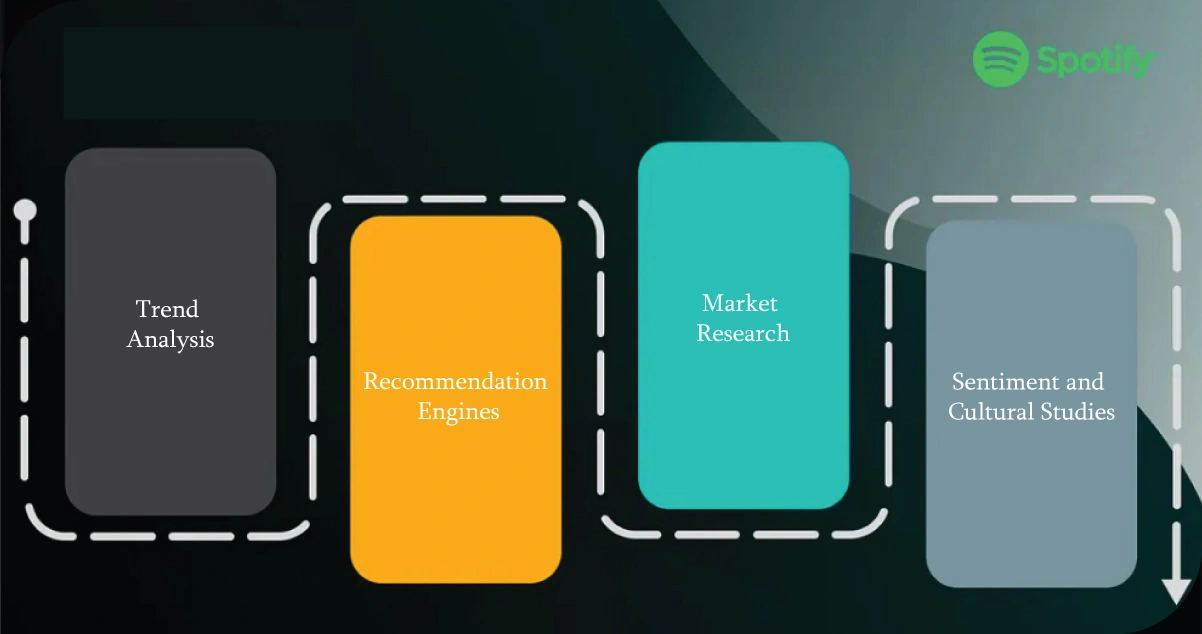
Scraped music data offers valuable insights across various use cases, from trend analysis and market research to personalized recommendations. Businesses can track song popularity and artist growth, while developers build innovative apps like playlist generators and music discovery tools. Researchers analyze cultural shifts through lyrics and genres, making scraped music data a powerful resource for the music industry and beyond.
- Trend Analysis: By leveraging tool like a Spotify playlist scraper Python, analysts can systematically gather and examine vast amounts of music data. This allows them to identify emerging genres and artists early, spotting shifts in listener preferences and new trends before they hit mainstream awareness. Such detailed tracking of playlists helps music platforms, artists, and industry experts stay ahead by understanding what's gaining traction in real time.
- Recommendation Engines: Recommendation systems become significantly more effective when they combine raw user data with intricate audio features such as tempo, key, and mood. Through Python web scraping for music data, developers extract this rich metadata from Spotify's vast library, enabling personalized suggestions that align with individual tastes. This fusion of behavioral data and audio characteristics refines the quality of recommendations, keeping listeners engaged longer.
- Market Research: Music labels, marketers, and streaming services rely heavily on insights derived from Spotify data scraping to monitor song popularity and audience engagement. Professionals can track how certain tracks perform across regions, demographics, and time periods by scraping large datasets. This intelligence supports targeted campaigns, strategic signings, and informed decisions about marketing spend, ultimately driving growth and maximizing ROI.
- Sentiment and Cultural Studies: Analyzing song lyrics and themes over time offers valuable perspectives on cultural trends and societal moods. Researchers use techniques to scrape trending songs from Spotify to collect up-to-date music samples, which then undergo sentiment analysis to detect shifts in tone—optimistic, melancholic, or rebellious. This cultural insight informs academic work and creative directions within the industry.
How OTT Scrape Can Help You?
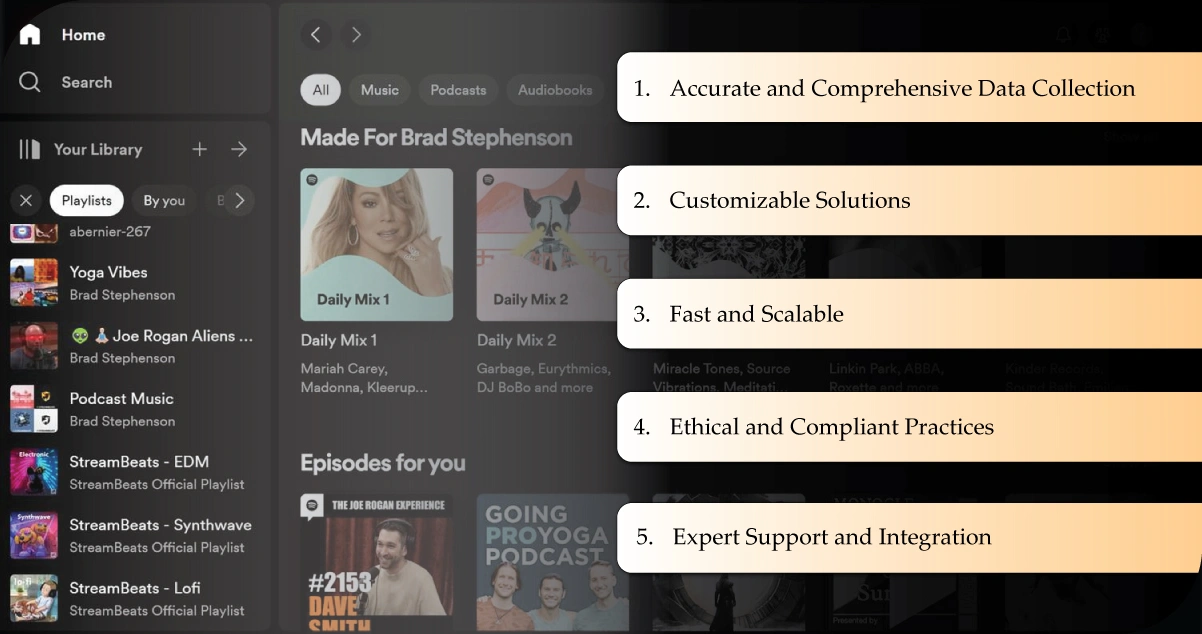
1. Accurate and Comprehensive Data Collection: Our services deliver highly accurate and extensive datasets that help businesses make well-informed decisions.
2. Customizable Solutions: We tailor scraping techniques to meet specific client needs across industries, ensuring relevant and actionable data.
3. Fast and Scalable: Our advanced technology quickly handles large volumes of data, supporting projects of any size without compromising quality.
4. Ethical and Compliant Practices: We prioritize legal and ethical standards, maintaining trust and long-term client partnerships.
5. Expert Support and Integration: Our dedicated team offers seamless integration and ongoing support, making client data utilization effortless.
Conclusion
Scraping and combining Billboard and Spotify data using Python is a powerful way to unlock insights from the music industry. Whether you're a developer, data scientist, or music lover, accessing this data can help you build innovative projects like personalized playlists, trend predictors, and detailed analytics dashboards.
You can easily scrape music data in Python and analyze it effectively by leveraging Python's rich ecosystem—BeautifulSoup for scraping Billboard and Spotipy for Spotify API access. Remember to use ethical scraping practices and respect API usage policies to maintain access and integrity. Ready to dive into the music data world? Start coding and explore the rhythms hidden in data!
Embrace the potential of OTT Scrape to unlock these insights and stay ahead in the competitive world of streaming!
